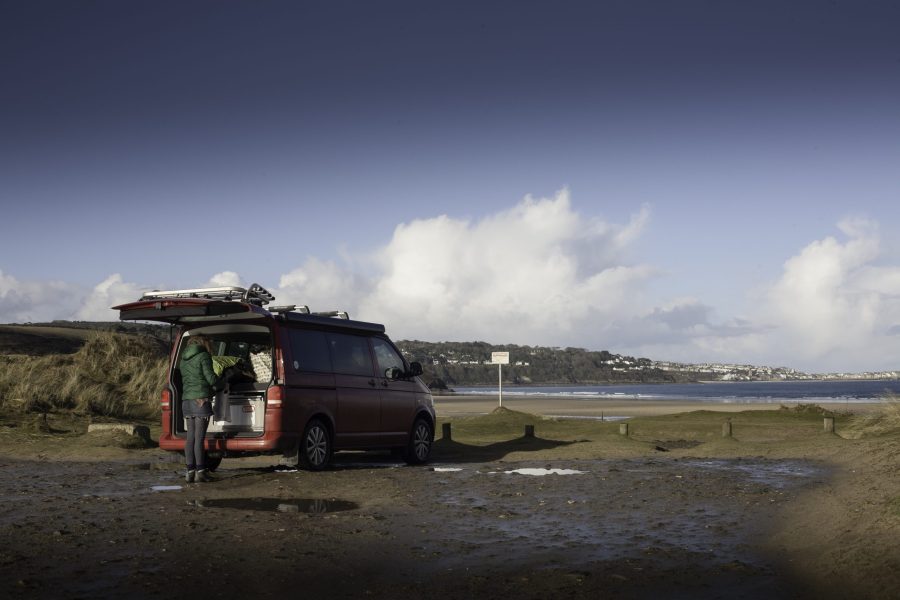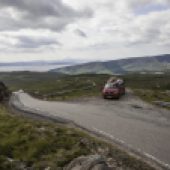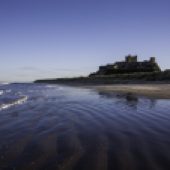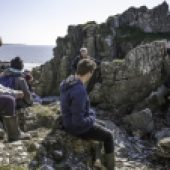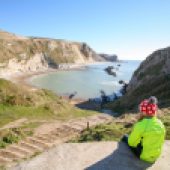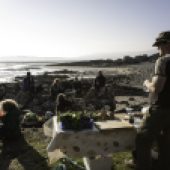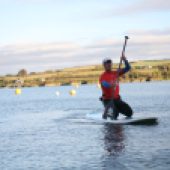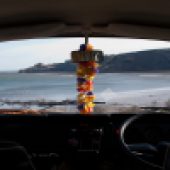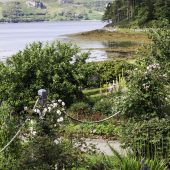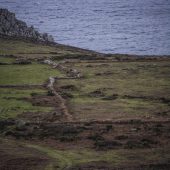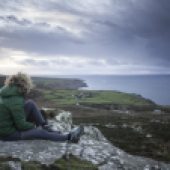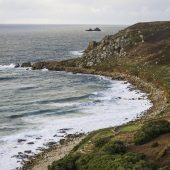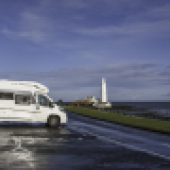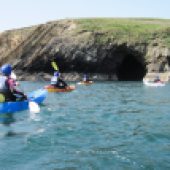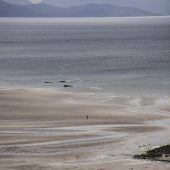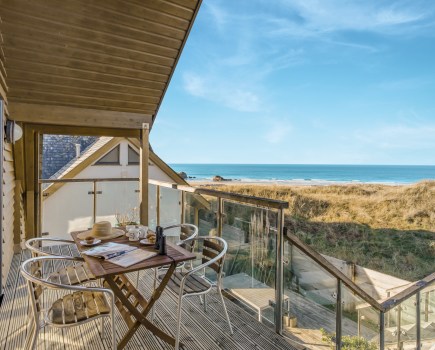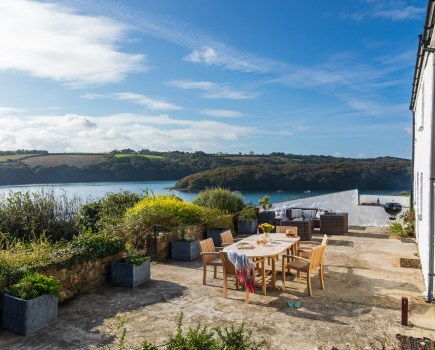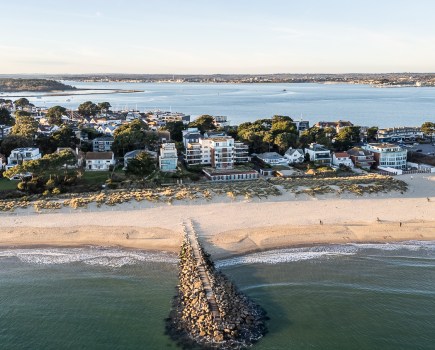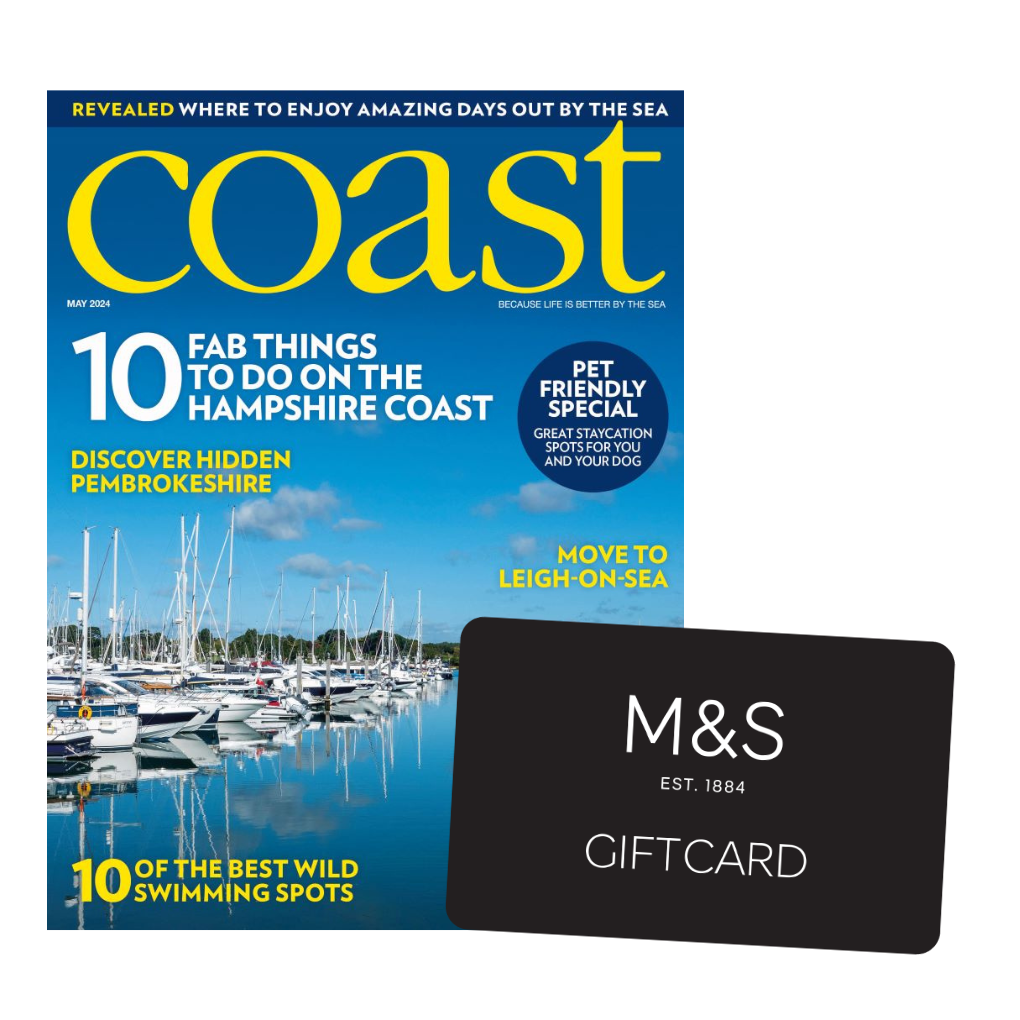I stand on the jetty, looking back at the CalMac ferry lying at anchor in the bay. Behind the small ferry lie Barra’s diminutive peaks. Hartabhal, at 360m, and the highest point on this tiny island in the Outer Hebrides, lurks behind its smaller brothers and sisters, keeping an eye on things.There is a camera around my neck, fitted with a super wide-angle lens so I can get a shot of the ferry, the mountains and as much of Barra as I can fit in. I have been here in a borrowed campervan for a few days and am loving every minute. I’ve met the island’s three surfers, climbed Hartabhal, surfed a wild, out of the way beach, camped in a deserted camp site and driven all of the island’s roads. I am here to begin a year-long tour of Britain’s greatest driving roads for a book project, Take The Slow Road, and Barra is a very good place to start.
The idea is to take pictures that will capture the essence of Barra. But I also want to take it all in and commit it to memory before I roll on to the ferry in the camper and continue my journey north to Eriskay, South Uist, Benbecula, North Uist and Berneray. When I reach the end of the jetty my attention is drawn to the water behind me. There is a splash, about 10 feet away, as something dives below the chop. I expect it to be a cormorant or shag, so wait for it to resurface. When it does, it’s an otter. I reckon it will scarper but it hasn’t caught a whiff of me yet and eats a fish, lying on its back. It is so close to me I can hear the crunch of fish bones. I watch, enthralled. I think about taking a photo but I only have a wide angle lens: it’s pointless. I mentally kick myself and stand, as still as I can, watching as this most elusive of creatures preens, eats and dives right in front of me.
No one will believe me, I think. But does that matter? It’s magical to be able to observe an otter at close quarters. I allow the experience to wash over me, enjoying this moment for its own sake. It’s a rare privilege and I must make the most of it. The otter sees me, disappears into a hole in the jetty and is gone. I walk back to the camper and continue my journey. My trip is complete.This is what travelling around the coast of Britain by campervan is to me. It’s about those moments of absolute brilliance, of rare wildlife encounters and unexpected meetings. It’s surfing with dolphins, and the blue flash of a kingfisher in tidal pools, or the busy flapping of puffins off the Farne Islands.So why not? Taking a campervan trip is fun and family-friendly. Britain’s coast is wonderful and to see it all you have to do is turn the key and go.
And if you can’t decide where to head first, then start here with my favourite British coastal road trips.
Best place for dolphin and whale spotting: THE OUTER HEBRIDES
The ferry to Barra from Oban on the mainland will take you across one of the best stretches of sea in the UK for whale and dolphin spotting. On the way out I saw so many cetaceans that I became a bit blasé about them. Look for long enough and you’ll see something break the surface. Calm days are best. I saw dolphins on the ferry to Eriskay from Barra too, as well as otters, seabirds and puffins on North Uist. Views over The Minches from Rudha Tiompan Lighthouse on the Isle of Lewis, are some of the UK’s best for whale spotting.
STAY:
Balranald Campsite, North Uist. Beautiful beaches (balranaldhebridean holidays.com).
GET THERE:
CalMac Ferries will take you all over the Outer Hebrides. For North Uist jump on at Uig on Skye to Lochmaddy (calmac.co.uk).
RENT A VAN FROM: harrisclassiccampers.co.uk
Hidden Gems: THE STREET, APPLECROSS, WESTER ROSS, SCOTLAND
Way to the north, hidden away at the bottom of Bealach Na Bá, the pass with the steepest ascent in the UK (from sea level to 626m) is a rarefied sanctuary. Inhabited since 672, this tiny oasis of a few houses, a pub and an incredible walled garden with a restaurant, is a generous reward for your hard work getting there. Surrounded by 70,000 acres of bog, mountain, moor and rock that make up the Applecross estate, arriving at The Street is like getting a cheery welcome hug. The bay is shallow, the beaches are lonely and the back drop, Raasay, and Skye beyond, fades into the summer sun in shades of purple and grey. Sitting in the sheltered and sunny walled garden of Applecross House after a long drive was a miracle cure. Just go, but be careful with the camper: the road is steep.
STAY:
Kinlochewe Caravan and Motorhome Club Site in Wester Ross makes a great base for coastal explorations.
JUST DRIVE:
Take the A896 to Tornapress then weave your way up the Bealach na Bá pass. Gobsmacking views await. And then the road back, along the coast, will leave you breathless.
RENT A VAN FROM:
highlandcampervans.com
Coastal explorations: PEMBROKESHIRE, WALES
TYF is one of the country’s leading outdoor adventure providers. It has an incredible attitude towards its playground and works hard to protect it as well as make sure the likes of you and me can enjoy it safely. I went out on a CoastalExplorer Day with TYF a few years ago and haven’t been able to improve on it since. There is no better way to see the coast. You’ll kayak to remote beaches, explore caves, take leaps of faith into the big blue and get to learn a little about Pembrokeshire’s epic coastline. When you’re done, take a drive out of the city (St David’s) and try a wild swim at The Blue Lagoon, Abereiddi. You will find a stunning blue, infinity deep, flooded quarry with dizzying leaps of faith from ruined mine buildings. I get butterflies just thinking about it. Pack a wetsuit.
PLAY TIME: Go exploring with TYF. You are in the safest hands (tyf.com).
STAY:
Cruise up the coast to one of Wales’ best campsites, Cae Du at Tywyn. Campfires, dolphins and beachside pitches (caedufarm holidays.co.uk).
RENT A VAN FROM:
pembrokeshireclassiccampers.co.uk
Ancient fields under Cornish Skies: THE B3306 BETWEEN ST IVES AND SENNEN
Stop haring about! This is one for the tortoises, never mind the stack of cars queueing behind you. If you dash on this heavenly stretch of road you’ll miss the engine houses, ancient field systems and teeny tiny beaches down farm tracks. And you might not make it around some of the bends that weave between tumbledown granite barns and forgotten cottages. At either end of this wild landscape above the waves you’ll find the very best of Cornwall. Sennen, to the south, is a proper beauty. A sweep of white sand leads you to the impossibly beautiful Gwenvor at low tide. To the north it’s perennial favourite, St Ives, the artists’ colony that hit the big time. The light is, as they say, stunning.
STAY:
Ayr Camp site overlooking St Ives (ayrholidaypark.co.uk).
ELEMENTAL:
The Minack Theatre at Porthcurno is fabulous because you never know what’s going to happen, even if you know how Macbeth gets it in the end. Watch the play or stare out to see into the beautiful oblivion that is the Atlantic Ocean. Magical performances every night (minack.com).
RENT A VAN FROM:
oconnorscampers.co.uk
Discovering Nature’s Bounty: COASTAL FORAGING IN GALLOWAY
On a small beach on the Galloway coast I met Mark Williams, forager and wild cook, along with a mixed bunch of people from all walks of life. Mark walked us along the shoreline and below the tideline to sample the best of Galloway’s littoral delicacies, starting with a delicious elderflower champagne. But then we arrived at a stream and Mark showed us water dropwort hemlock, Britain’s most poisonous plant. With renewed respect for the world around us – and thirsty for more knowledge – we gathered for a foraged feast on the shore as the sharp April sun dropped over the sea and the shadows drew longer. At the end of the day we pulled up at a remote beach and camped up for the night. Just perfect.
WILD CAMPING:
Unlike in most of the UK it is legal to camp wild (in a tent) in much of Scotland. For campervanners this means there is a more tolerant attitude to responsible off-site overnighting. Clear up when you arrive and before you leave and you’ll be welcomed.
EAT THE BEACH:
Take a Coastal Foraging trip with Mark (gallowaywildfoods.com).
BOTANICAL WANDERINGS:
In 2018 The Royal Botanical Gardens in Edinburgh launches ‘The Bonnie Botany Tour’ which takes in the Galloway Coast and the sublime sub-tropical gardens at Logan near Stranraer (rbge.org.uk).
RENT A VAN FROM:
roseislemotorhomehire.com
Inspirational journeys through Scotland by motorhome and campervan is published by Bloomsbury (£20) on May 3. Available from martindorey.com
Right things on the right

